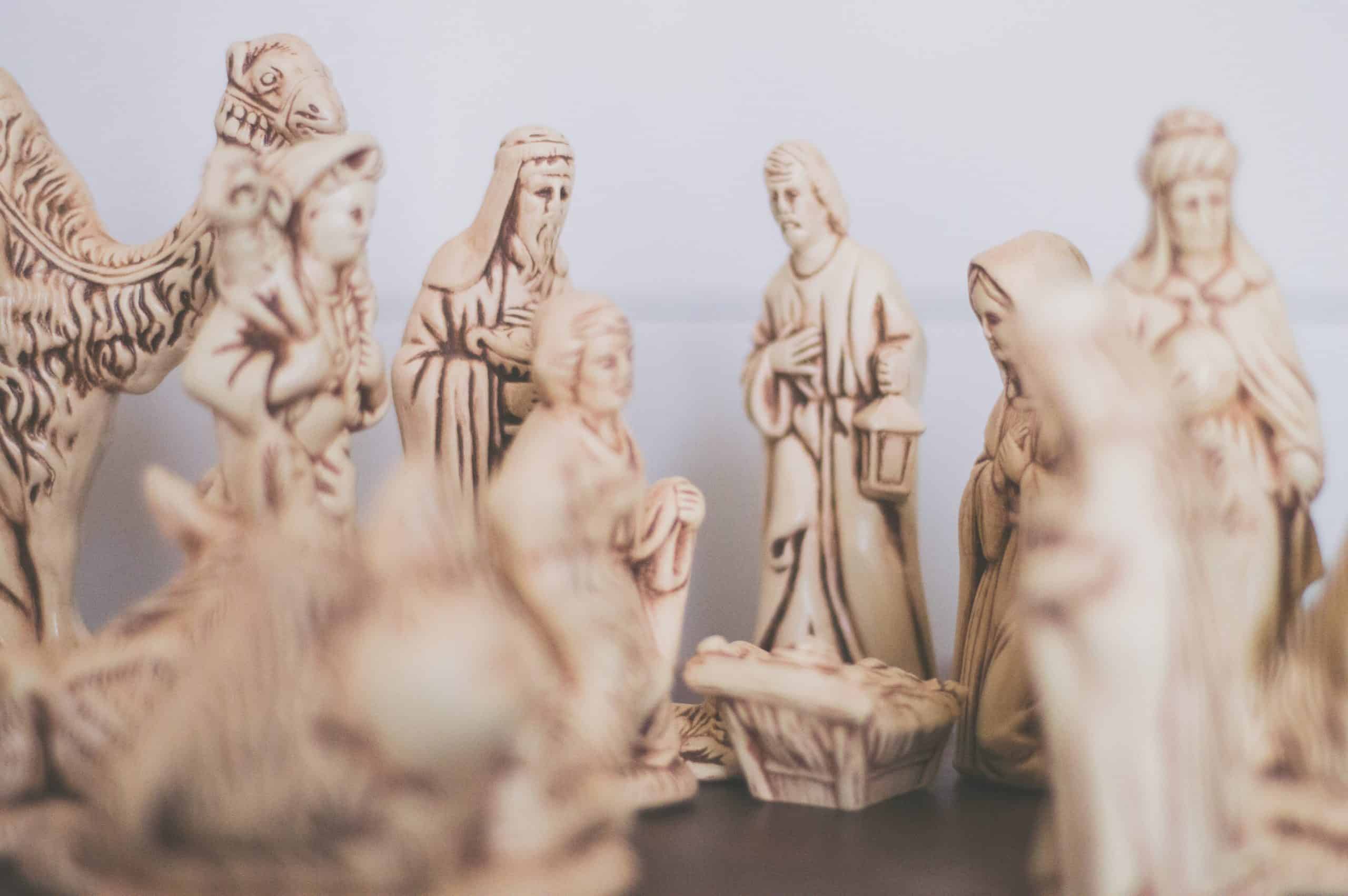Imagine it’s Christmas morning again. You reach into your stocking and pull out a hefty lump of clay. Directions are attached.
Step 1: Make clay figures of the most important people in your life. You may sculpt parents, partners, children, friends, coworkers, ex’s, the person who hurt you when you were six-years-old — anyone you have a relationship with and takes up a significant amount of mental space – for good or ill. Also, make a figure of yourself.
Step 2: Arrange the figures in relation to one another, attending to posture, spacing, and attitude.
For example, where do you place aunt Jonie? Your eldest child? Are all family members huddled around the kitchen table, smiling, while uncle George is crouched in the corner, holding a megaphone?
Does your clay hand gently press into your partners’ or is it more a tug of war situation? Be honest.
Step 3: After finishing touches are put on facial expressions, body language, and spacing, step back and ask yourself: What does the scene reveal?
* * * * *
Every now and then in my work as a therapist, I’ll lead clients through this exercise. It’s a technique from family therapy called “family sculpting.” One needn’t use clay; barbies and action figures suffice. In a pinch, a crayon drawing does the trick.
Regardless of materials used, the next step is always the same. After the family sculpture is finished, I ask the client to explain why people were placed as they were.
I remember one client who squished all of the clay figures together. She explained her struggle finding healthy autonomy from her family, which required everyone think, act, and feel the same way.
A second client crafted her father standing rigid with both arms on mom’s shoulders, who knelt at his feet. The eldest sibling sat covering her face at the house’s front door, while the middle siblings circled around the room at various distances. My client, the youngest sibling, left herself completely out of the scene.
Another client wrote two columns of words on a piece of tissue paper. In column A, he wrote: matriarch, loving, religious, widower. In column B: anxious, sanctimonious, played favorites, trauma. He suspended the paper like a cloud over the entire scene. The tissue represented his grandmother who suffered abuse early in life, and, though long deceased, still wielded considerable influence over the family.
Family sculpting is a powerful exercise. It uncovers family dynamics when words or verbal descriptions fall short. It’s often a poignant entrance into a fuller conversation about what’s going on and helps individuals express uncomfortable memories and feelings.
An equally powerful moment is when clients make a second sculpting, this time of how they would like the relationship to look. In this re-molding, families get to envision and express a new reality, a new dynamic and way of being. Then they imagine how to get there, together.
* * * * *
Sculpture musings came up at Christmas Eve mass when the priest drew my attention to the creche. Suddenly it dawned on me, the nativity scene is God’s family sculpting of sorts. I stepped back to wonder: What does this particular tableau reveal?
It’s a serene, peaceful affair. But this wasn’t always the case.
Joseph once planned on dismissing Mary. Mary once sat confused, wondering how she might bear a child given her circumstances. Did Nazareth gossipers show up to badger them? And who knows the terror the shepherds needed to overcome in the field that evening. Or all the quarrels the magi had on their journey concerning which direction to go. All of this, to say nothing of the long history of chaos, cruelty, and conflict the human family experienced up to that blessed night.
And yet, the nativity also reveals that out of the messiness of human frailty, sin, and relational impasses, God was artful enough to mold (like a sculptor with messy clay) a new family.
If God inspired Joseph, an old man, to follow dreams over dismissive impulses, can’t we be inspired, too?
If God made a young girl the herald of a renewed world order, where the mighty are cast down and the humble lifted up, shan’t we sing a similar song?
If God made lion nuzzle lamb and positioned lowly, unlearned shepherds equally alongside rich and powerful kings, shouldn’t that work of leveling out be ours as well?
Indeed, our nativity sets – these holy family sculptings – provide a model of how we are to be with one another. To give space when needed and invite closeness to those cast out; to value each other’s gifts and respect that everyone has an important part to play. Ultimately, they testify that despite any family or community dysfunction of a given moment, there can be healing and hope. None of us are stuck.
Those clients I accompanied made new realities out of old relational hurts by taking that first, necessary step: embracing vulnerability – their own and that of those around them.
That, too, is the message of the Nativity.
Just think of it. All those figures at the Bethlehem stable, made holy because they allowed themselves to be molded around divine vulnerability in the form of an infant, who, at their feet, laid unguarded, exposed, open to all.
The Christmas season isn’t over. The clay is in our hands. What, with God’s guidance, will we make of it this coming year?
-//-
Photo by Jessica Lewis from Pexels


